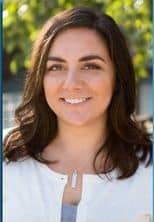by Kerry Shanahan, Third Grade Teacher, Country Day School Costa Rica
The educational world is not shy to its fair share of jargon-based dialogue and a tornado of abbreviations that could make your head spin. Every waking day students are subjected to a slew of new curricular initiatives, changing specials schedules, reading logs, MAP testing preparation — and are left with a completely unbalanced amount of time to use their voices, their words, and their creativity to take ownership of their own learning.
The Washington Post reported in 2015 that the average student spends two percent of their entire mandatory school hours performing and preparing for standardized tests. As classroom educators, it is virtually impossible for us to control what we are and are not mandated to administer in regards to federal or state-enforced testing. However, we can reframe the narrative by building students' voices every opportunity we can and offering a safe space for students to lead their own learning.
It will come as no shock to anyone who has spent any time in education, relationships are the pinnacle for student success. You can see it daily when you walk through the halls of a campus. Relationships thrive in classrooms where teachers carve out those precious twenty minutes each day for a proper Morning Meeting or when they spend the first month of the school ensuring routines and procedures are clear and consistent. Creating a framework for communication allows students to use their voices in both academic and non-academic ways. In turn, this builds and promotes class community, and ensures all students have a voice and a place at the table.
Building student-led interactions starts before our students even walk through the door on the first day of school. It begins by rewriting traditional educational biases that may be held in the forefront, or the back, of your mind. Yes, this might mean students are not in SLANT or Listening Position during the “I Do” portion of your lesson plan. Instead of delivering a detailed report on their gains and losses of their BAS assessment it might look like a student sharing and reviewing their top five books they have read so far, and yes a graphic novel counts!
Student-led learning involves both student and teacher growth mindset. For example, giving students choice about where they conduct their learning can instill a strong sense of ownership, which grounds them in their learning and creates a long-lasting impact. This is a continual process that builds on the foundations of trust, respect, and honesty between teachers and students as well as peer-to-peer.
Along with students owning how and where they learn, student-led reflection is a major facet of growth. At our school, educators create multiple chances, daily, for students to reflect on their work, their behavior, their mental health, and their relationships. In your classroom, the next time you are collecting, let's say a writing journal entry, stop and ask students to rate one thing — perhaps their effort on the piece or even their handwriting.
My school utilizes Standards-Based Grading, so my students would reflect in a 4-3-2-1 context. 4 meaning, “I got this, I can teach this to someone else” and 1 being I am just starting to learn this and I don’t understand yet (yet being the keyword).” Students would simply write the number they feel corresponded with the prompt you gave them. I always ask for a one-sentence reason why. During the beginning months of the school year, you’ll get a lot of “I did a good job” or “I like my story.” Fear not, by creating this space for students to succeed they will eventually persevere and rate themselves honestly with reason sentences like, “I rushed on this prompt. Next time I will slow down and reread the question when I am confused.”
Our world of education is constantly changing, growing, and evolving — at an ever-rapid pace. The challenge with constant change is adapting quickly and effectively enough to meet the needs of the students we have pledged to teach. Join me in creating small steps within the confines of your classroom, counselors' office, bus duty station, or even your soccer field. We are creating the future every day in our classrooms. It is imperative we empower and build strong leaders to take on the unknown future that stands before them.
[box] FariaPD supports teachers and leaders around the world with hands-on, active and creative professional development experiences. Join one of our online or in-person professional development events, each designed to support the unique goals of your school or district. FariaPD is part of Faria Education Group, an international education company that provides services and systems for schools around the world including ManageBac, a curriculum-first learning platform, OpenApply, an online admissions service, and Atlas, a tailored curriculum management solution for schools. [/box]

ABOUT THE AUTHOR
Originally from the western suburbs of Chicago, Kerry attended Illinois State University where she graduated with my Bachelors Degree in Elementary Education in 2011. After college, she moved to Chicago to begin teaching for Chicago Public Schools in a Title I school while pursuing her LBS1 and MEd in Urban Education.
Upon graduating in 2013 she continued to teach for Chicago Public Schools until 2018. Kerry currently teaches 3rd grade at Country Day School in Costa Rica. She is working on completing her Doctorate Degree in Educational Leadership in Urban Setting through the University of Southern California.

